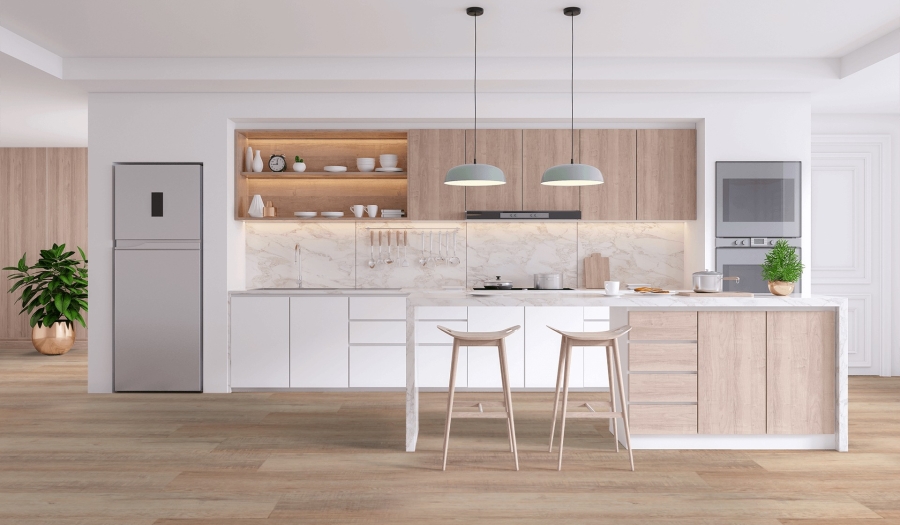
5 Ways High Humidity Can Affect Your Flooring – And How to Solve It
The temperature and moisture levels within our homes are not something most people typically think about. Yet these factors can affect the infrastructure of any building and, in particular, the flooring. As the seasons change, so too does the amount of water vapour in the air. Because warm air holds more water than cooler air, summer is usually when the air is most humid. High humidity is also more common in certain areas of South Africa and installing flooring such as hardwood in such places is unwise. If you are keen on learning more about how high humidity can affect your flooring and how to remedy the issue, keep reading.
1. How High Humidity Can Affect Hardwood Flooring
Hardwood floors are made from solid, wooden planks and are therefore less resistant to moisture damage. This is a beautiful flooring option but its biggest drawback is that high humidity will affect it negatively. Wood is a porous absorber and the more moisture it draws in from the air, the more it will expand. The expanding boards then push into each other and eventually cause peaks at the seams, known as buckling – this can also lead to irreversible cracking. When the air dries out again, the wood may shrink and look misshapen or leave large gaps between the floorboards. The planks can even split or splinter along the grain, which is major damage that will require replacing the boards.
2. The Impact of Humidity on Carpeting
If there is one thing you want to avoid on your carpeting, it is moisture build-up. This is because excessive moisture trapped between the fibres will contribute to the growth of mould and mildew. Mould will not just cause unsightly discolouration but it is a health hazard that may lead to allergies and respiratory issues. As moisture in the air moves, it can bring with it dirt and debris, which can lead to further damage to a carpet if not quickly cleaned up. High humidity will also affect the form of the carpet as it expands and shrinks with moisture and dry air. Eventually, this might create ripples or “bubbling” on the surface.
3. How Wood Laminates Fare Under High Humidity
Wood-laminate boards are made by fusing together various layers. The main component between these layers is the core of the high-density wood fibre. While high-quality laminates are rather water-resistant, they are not completely waterproof. It is therefore possible for moisture to affect this type of flooring. Humidity of over 60% will cause wood laminates to expand and press into each other, and this can cause cupping and crowning. Once the air becomes less humid, the wood fibre will dry out and shrink, leaving gaps between the boards. During installation, expansion gaps must be left between the boards in case of temperature and moisture changes in the air.

4. Engineered-Wood Floors and Damp Air
People mistakenly assume that engineered wood is a kind of faux-wooden flooring. The reason it looks so realistic, however, is because it is topped with a real wooden veneer. Just like any other kind of wood product, engineered-wood floors will absorb damp air, and then swell and expand. Some warping may not be serious and the planks may return to normal once the air dries out. The planks may pull away from the subfloor, however, which causes buckling and even cracking. Once a plank cracks, it will need replacing.
5. Luxury Vinyl Tiles and Moisture
High humidity can affect most kinds of flooring solutions. Luxury vinyl tiles (LVTs) are a standout option as they are completely waterproof. They, therefore, do not face damage when exposed to moisture spills or damp air. This makes them an excellent choice for kitchens and bathrooms. What can affect luxury vinyl tiles, however, is when they are installed above concrete that contains moisture. This moisture in the concrete can cause a chemical reaction that degrades the LVTs over time, causing damage. Concrete should always be tested for moisture levels and measures must be taken to prevent any moisture from the concrete from coming into contact with your LVT installation.
How to Make Your Home Less Humid
The aim is to try and maintain consistent moisture levels in your home throughout the year. Low and high humidity will affect your flooring in different ways, so maintaining a level of between 40 to 50% is recommended. This can be done with humidifiers, dehumidifiers and air-conditioners. Proper ventilation is also a necessity as a lack thereof can lead to condensation within the home that may also cause water damage. You should also avoid wet-mopping or using water-based cleaning products every day and only make use of these when it’s really necessary. A slightly damp cloth can be used to clean up any marks or small stains. Lastly, never allow water to pool, puddle and dry up on its own – clean spills as soon as they happen.
For more information on how high humidity can affect your chosen flooring, or which products would suit your home best, be sure to get in touch with us today.

